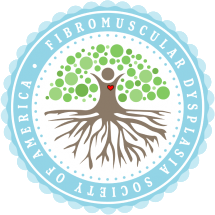NACAD Registry – Primary Investigator, Dr Jackie Saw
The Non-Atherosclerotic Coronary Artery Disease (NACAD) Registry is an ongoing patient registry approved by the UBC research ethics board for patients with non-atherosclerotic forms of coronary artery disease. Patients with previously diagnosed SCAD are eligible for this study.
Objectives:
(1) To evaluate the long-term clinical outcome (recurrent cardiac events, hospitalization, revascularization, and symptoms) of patients with NACAD.
(2) To evaluate the long-term outcome of the dominant subsets of patients with NACAD, in particular, SCAD and coronary FMD.
Study Population:
Patients who were previously identified to have NACAD on coronary angiography. Any NACAD patients who presented with ACS or stable outpatients are eligible. We anticipate that the majority of patients would be women.
For inclusion in the NACAD Registry please contact research coordinator Dr. Andrew Starovoytov (a.starovoytov@ubc.ca) or principal investigator Dr. Jacqueline Saw (jsaw@mail.ubc.ca).
Dr Saw is also the principal investigator for the Canadian SCAD Study for more information on her research please visit http://scad.ubc.ca

 Since ancient times and across many cultures, the tree has long been a symbol of many things, including wisdom, protection, strength, inter-connectivity, and life itself. We’ve chosen the tree to represent the Fibromuscular Dysplasia Society of America for these reasons, and because the tree’s branches and roots signify the arteries affected by this disease. The tree’s branches, reaching upward and outward, provide protection and shelter, and represent our mission to help those who’ve been diagnosed with FMD. Trees, strengthened by their continuously spreading roots, symbolize how as we grow together we are stronger and more resilient. As with its growth from a delicate sapling to a giant robust tree, and as its branches and roots grow and spread, the tree symbol represents how we’ve evolved and continue to promote research, education and patient support throughout the years. Together we can achieve much, as we strive to reach for the sky.
Since ancient times and across many cultures, the tree has long been a symbol of many things, including wisdom, protection, strength, inter-connectivity, and life itself. We’ve chosen the tree to represent the Fibromuscular Dysplasia Society of America for these reasons, and because the tree’s branches and roots signify the arteries affected by this disease. The tree’s branches, reaching upward and outward, provide protection and shelter, and represent our mission to help those who’ve been diagnosed with FMD. Trees, strengthened by their continuously spreading roots, symbolize how as we grow together we are stronger and more resilient. As with its growth from a delicate sapling to a giant robust tree, and as its branches and roots grow and spread, the tree symbol represents how we’ve evolved and continue to promote research, education and patient support throughout the years. Together we can achieve much, as we strive to reach for the sky.